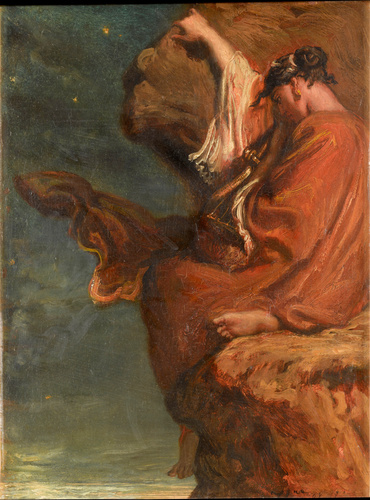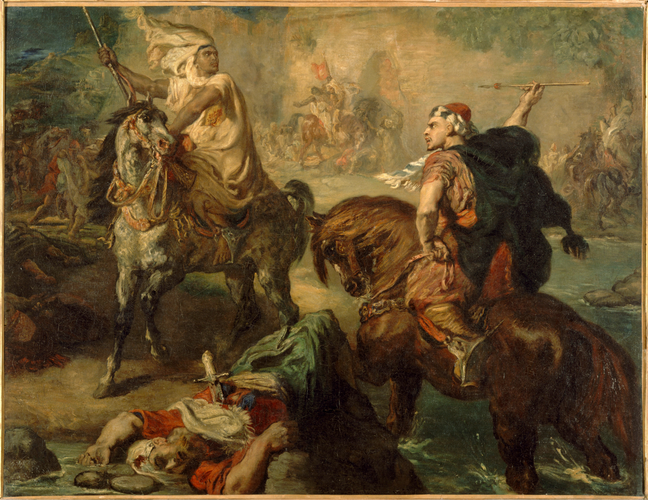Le Tepidarium, "salle où les femmes de Pompéi venaient se reposer et se sécher en sortant du bain"
Chassériau explicitly sets this scene in Roman antiquity, since the decor takes its inspiration from the baths of Venus Genitrix, a recent archaeological discovery in Pompeii. Fascinated by these vestiges which he himself had visited, the painter tries to bring to life a population of whom he had "kissed [the] extraordinary, painful traces."
This painting was greatly admired at the 1853 Salon; Théophile Gautier described it as "an antique fresco stolen from the wall of Pompeii". The erotic atmosphere emanating from the work probably fanned the excitement. The nonchalant poses and glances, the promiscuity of the languid bodies creates a harem atmosphere. Chassériau's antiquity is tinged with an oriental perfume, a touch of romantic exoticism and colourful sensuality. The belief that the voluptuous customs of the ancient world survived in the Arab world of the 19th century was firmly rooted in the minds of many French travellers.
Several influences are perceptible in this painting. The composition in two symmetrical groups with a heavily accentuated perspective is taken from Raphael and there are many parallels with the works of Poussin. The taste for line, the smooth pearly perfection of the nude bodies, and the masterly drawing remind us that Chasseriau was a pupil of Ingres. Lastly the artist's admiration for Delacroix shines through in the bright colours. In this example of the fusion of history and genre painting, so dear to the Second Empire, Chassériau manages to reconcile "the two rival schools of drawing and colour".





